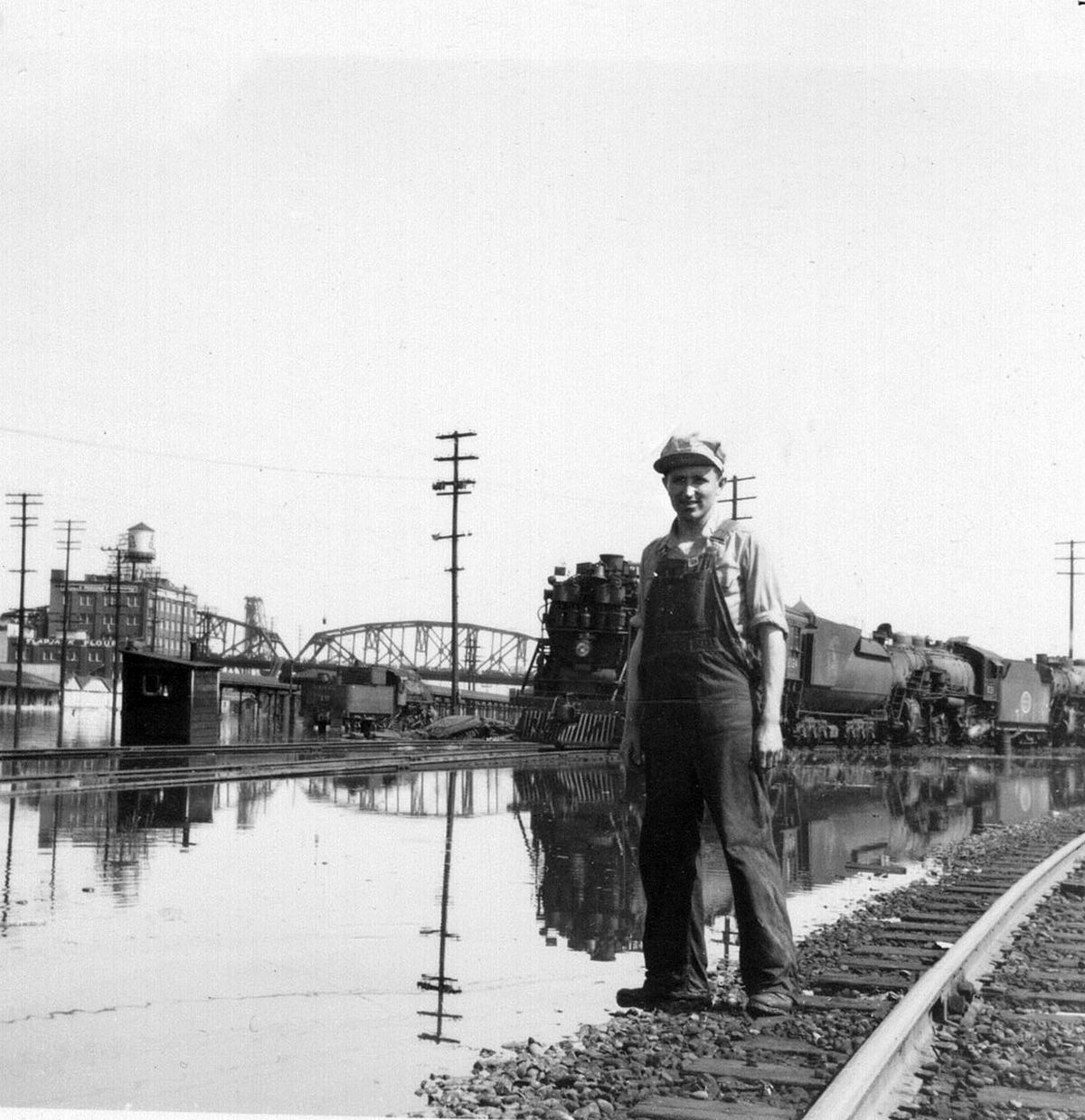Love for locomotives runs deep in this family

My father, Kenny Prager, ran the 700 steam locomotive shown in a refueling photo at the Black Tank Property in Hillyard.
His railroading career dated to the 1940s when steam power drove America. Dad died in 1998 after working during his retirement on the restoration of the 700 in Portland.
The cleanup of bunker C oil at the old Hillyard rail facility is an unfortunate legacy of Spokane rail history. But the spill can hardly tarnish America’s love of the rails, nor take away from all that railroads helped to build.
Dad was among a group of railroaders who passed their knowledge from generation to generation, and he shared that knowledge with members of the Pacific Railroad Preservation Association, which restored the 700 in the late 1980s and 1990s. The locomotive has been through Spokane on subsequent tours.
He worked his way up from fire builder to engineer on the Spokane, Portland & Seattle Railway, following in the footsteps of his father, Nick Prager.
Dad was fireman on the 700 during its regular service. He also had the chance to be the engineer.
The state Department of Ecology has an old calendar photo of the 700 being refueled in Hillyard at the site where spilled bunker C fuel oil is floating on the Spokane aquifer 170 feet below ground.
While it’s not likely that dad is the engineer in the photo, it is a fact that he was born in Spokane. He was such a cute baby that he was declared a runner-up and a cup winner in an annual baby contest sponsored by the Spokane Chronicle.
Locomotive engineers were rock stars in their era. Most people don’t realize today how much courage it took to grab the controls of 43 tons of steel, fire and steam. The engineer runs blind anytime the locomotive turns to the left. The oncoming track is blocked visually behind the engine.
Having a faithful watch was the key, and a good engineer would arrive at a station or siding as ordered and on time. It was a watershed event when Dad got his first Accutron wristwatch.
The engine crews often spoke of steam locomotives as if they were living creatures, belching and spitting even while standing still.
In fact, the 700 is known as “The Lady.”
Dad worked in the Columbia River Gorge on the SP&S, which provided the Jim Hill rail empire with a connection into Portland to compete with the Union Pacific Railroad. Portland’s Pearl District is the old SP&S service area.
The SP&S, the Great Northern Railroad and Northern Pacific Railway were swallowed up in mergers that led to today’s BNSF Railway.
Dad worked with Gus Melonas, longtime spokesman for BNSF in Seattle, as well as Gus’ father. Gus started his rail career working on track maintenance, following his father, grandfather and uncle on the railroad. His twin brother also is a railroader.
Working on the rails was a hard job, both physically and mentally. Dad would frequently be called out in the middle of the night when he worked the “extra board.”
I remember the time he came home, his face white as a sheet. Hours earlier, his engine struck and killed a man walking down the track in the Gorge. Dad said he blew the horn over and over and the man didn’t move out of the way, but large trains cannot stop quickly. He said he had to help clean up the remains. The man may have been suicidal, he told us.
Years earlier, he called in sick with the flu. The train he would have been working on went off the tracks and into the Deschutes River in Oregon, killing the crew, as I recall.
A reference to the 1954 accident on Wikipedia said the crew came around a curve and struck a rock slide at Boxcar Rapids, which takes its name from the accident, one of the worst on what is known as the Oregon Trunk line.